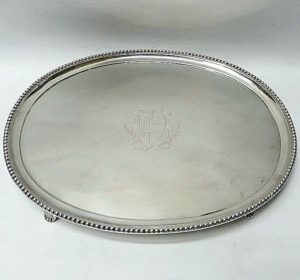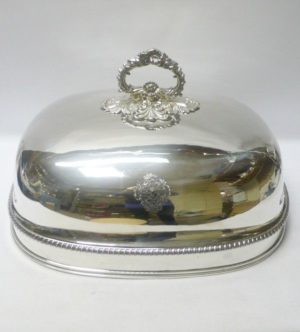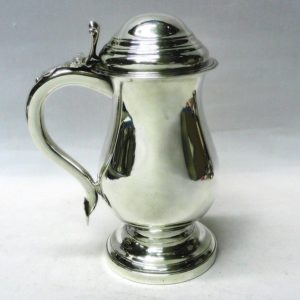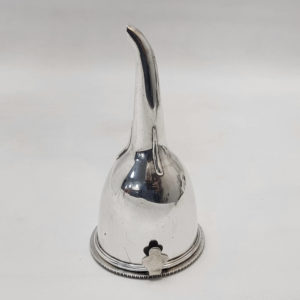Matthew Boulton
Matthew Boulton (3 September 1728-17 August 1809), English silver manufacturer and business partner of Scottish engineer James Wyatt. In the final quarter of the 18th century, the partnership installed hundreds of Boulton and Watts steam engines, making possible the mechanisation of factories and mills. Boulton applied modern techniques to the minting of coins, striking millions of pieces for Britain and other countries, and supplying the Royal Mint with up to date equipment. Boulton was a keen member of the Lunar Society, a Birmingham group prominent in the arts, sciences, and theology. Members included Watt, Erasmus Darwin, Josiah Wedgwood and Joseph Priestley. The Society met each month near the full moon, its members credited for developing concepts and techniques in science, agriculture, manufacturing, mining and transport that laid the groundwork for the industrial revolution.
Boulton’s father was a “toy maker” and silver stamper specialising in the production of shoe-buckles. Boulton junior was taken into partnership in 1749 and left in sole charge of the busines of the business after the death of his father in 1759.
Among the products which Boulton wished to make was sterling silver plate for those able to afford it and Sheffield plate for those less well off. In 1762 Boulton took John Fothergill as partner to act as travelling salesman advertising his wares and his factory moved to Soho, Birmingham in the same year. The partnership concentrated in the production of steel “toys” a little later on buttons and buckles made in a variety of substances including silver. In 1762 the Soho factory began to produce articles in “Sheffield” plate and was one of the first to adopt “Sterling silver thread” edging which prevent to reveal the underlying copper. Boulton soon became the largest manufacturer of “Sheffield plate” in the country and expanded the business of his Soho manufactory to encompass the production of bijouterie, objects d’art and de virtue, in ormolu, pinchbeck and tortoise-shell, and in clocks.
In 1765 Boulton began to manufacture items in solid silver and was obliged to send every piece of plate to Chester to be marked (Chester was the nearest assay office, 72 miles from Birmingham). Boulton started a petition to assay silver in Birmingham and was successful in getting Parliament to pass an act establishing assay offices in Birmingham in 1773 and also in that same year in Sheffield, whose silversmiths had faced similar difficulties in transporting their wares.
Boulton’s distinctive Old Sheffield plate mark with two suns is a sign of quality and his work is much sought after. His sterling silver mark, a simple “MB”, was accompanied by John Fothergill’s “IF” during their partnership (1762-1783).
Matthew Boulton
Matthew Boulton (3 September 1728-17 August 1809), English silver manufacturer and business partner of Scottish engineer James Wyatt. In the final quarter of the 18th century, the partnership installed hundreds of Boulton and Watts steam engines, making possible the mechanisation of factories and mills. Boulton applied modern techniques to the minting of coins, striking millions of pieces for Britain and other countries, and supplying the Royal Mint with up to date equipment. Boulton was a keen member of the Lunar Society, a Birmingham group prominent in the arts, sciences, and theology. Members included Watt, Erasmus Darwin, Josiah Wedgwood and Joseph Priestley. The Society met each month near the full moon, its members credited for developing concepts and techniques in science, agriculture, manufacturing, mining and transport that laid the groundwork for the industrial revolution.
Boulton’s father was a “toy maker” and silver stamper specialising in the production of shoe-buckles. Boulton junior was taken into partnership in 1749 and left in sole charge of the busines of the business after the death of his father in 1759.
Among the products which Boulton wished to make was sterling silver plate for those able to afford it and Sheffield plate for those less well off. In 1762 Boulton took John Fothergill as partner to act as travelling salesman advertising his wares and his factory moved to Soho, Birmingham in the same year. The partnership concentrated in the production of steel “toys” a little later on buttons and buckles made in a variety of substances including silver. In 1762 the Soho factory began to produce articles in “Sheffield” plate and was one of the first to adopt “Sterling silver thread” edging which prevent to reveal the underlying copper. Boulton soon became the largest manufacturer of “Sheffield plate” in the country and expanded the business of his Soho manufactory to encompass the production of bijouterie, objects d’art and de virtue, in ormolu, pinchbeck and tortoise-shell, and in clocks.
In 1765 Boulton began to manufacture items in solid silver and was obliged to send every piece of plate to Chester to be marked (Chester was the nearest assay office, 72 miles from Birmingham). Boulton started a petition to assay silver in Birmingham and was successful in getting Parliament to pass an act establishing assay offices in Birmingham in 1773 and also in that same year in Sheffield, whose silversmiths had faced similar difficulties in transporting their wares.
Boulton’s distinctive Old Sheffield plate mark with two suns is a sign of quality and his work is much sought after. His sterling silver mark, a simple “MB”, was accompanied by John Fothergill’s “IF” during their partnership (1762-1783).
-


1781
Matthew Boulton
8476 George III Salver by Mathew Boulton
Sold
A large antique sterling salver of oval form with a bead border and raised on splay feet with a classical design. Hand engraved to the centre is a fine quality armorial. Excellent quality, broad borders, heavy gauge silver. Weight 1602 grams, 51.5 troy ounces. Measures 39 x 31 cms. Birmingham 1781. Maker Boulton & Fothergill.
-


1810
Matthew Boulton
7908 Georgian Meat Dome in Old Sheffield Plate by Matthew Boulton
Sold
An antique dish cover of curved rectangular form in Old Sheffield plate. Good size. Handsome plain design with a gadroon ring border and decorative handle. Hand engraved to both sides is a lion crest on a chequered background within a decorative cartouche – all within an inset silver shield. Lovely crisp borders. Height 25 cms. Length 40 cms. Width 31 cms. Marked inside the handle with the double sun mark for Matthew Boulton, probably the most well known of all Old Sheffield plate makers. Circa 1820.
-


1773
Matthew Boulton
8645 George III Silver Lidded Tankard by Matthew Boulton
Sold
A rare antique sterling silver tankard with domed hinged lid and plain baluster design. From the Matthew Boulton and John Fothergill partnership and made in 1773, the first year of the Birmingham assay office. Good weight. Simple strapwork to the top of the handle and a cut out thumb piece. Inside you can still see the hammered finish. Uninscribed. Contains 900 ml. Weight 708 grams, 22,7 troy ounces. Height 22 cms. Diameter 9 cms (top). Birmingham 1773. Maker Matthew Boulton and John Fothergill.
-


1790
Matthew Boulton
10261 George III Antique Silver Wine Funnel
Sold
A classic style antique silver wine strainer with a gadroon border and simple shaped thumb piece. Very elegant form. Good weight and colour. A rare feature is the detachable muslin strainer ring. Weight 186 grams, 5.9 troy ounces. Length 15 cm. Diameter 7.7 cm. Birmingham 1790. Maker Matthew Boulton. Sterling silver. 18th century.